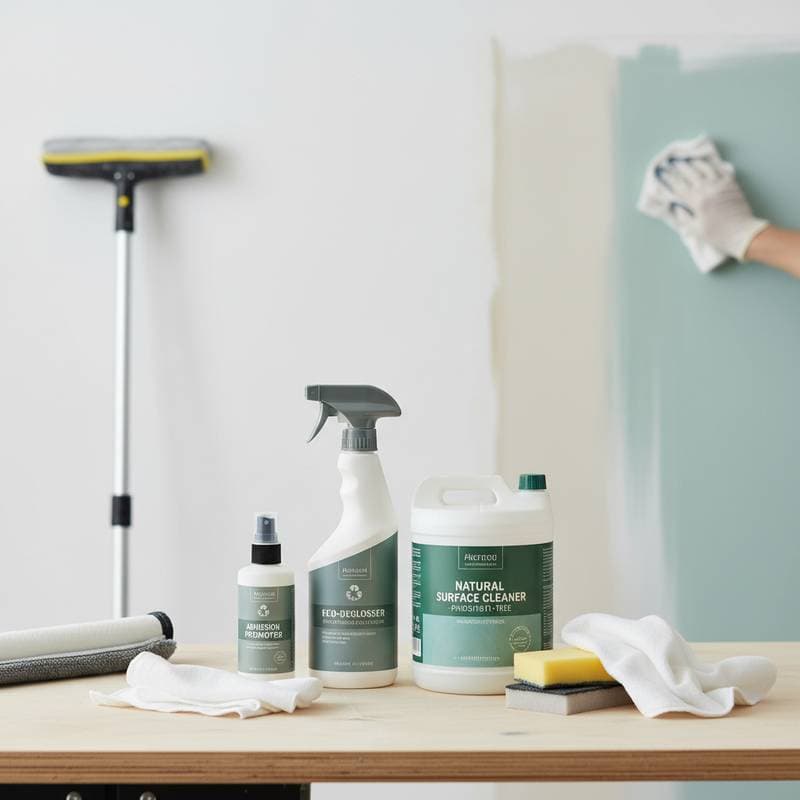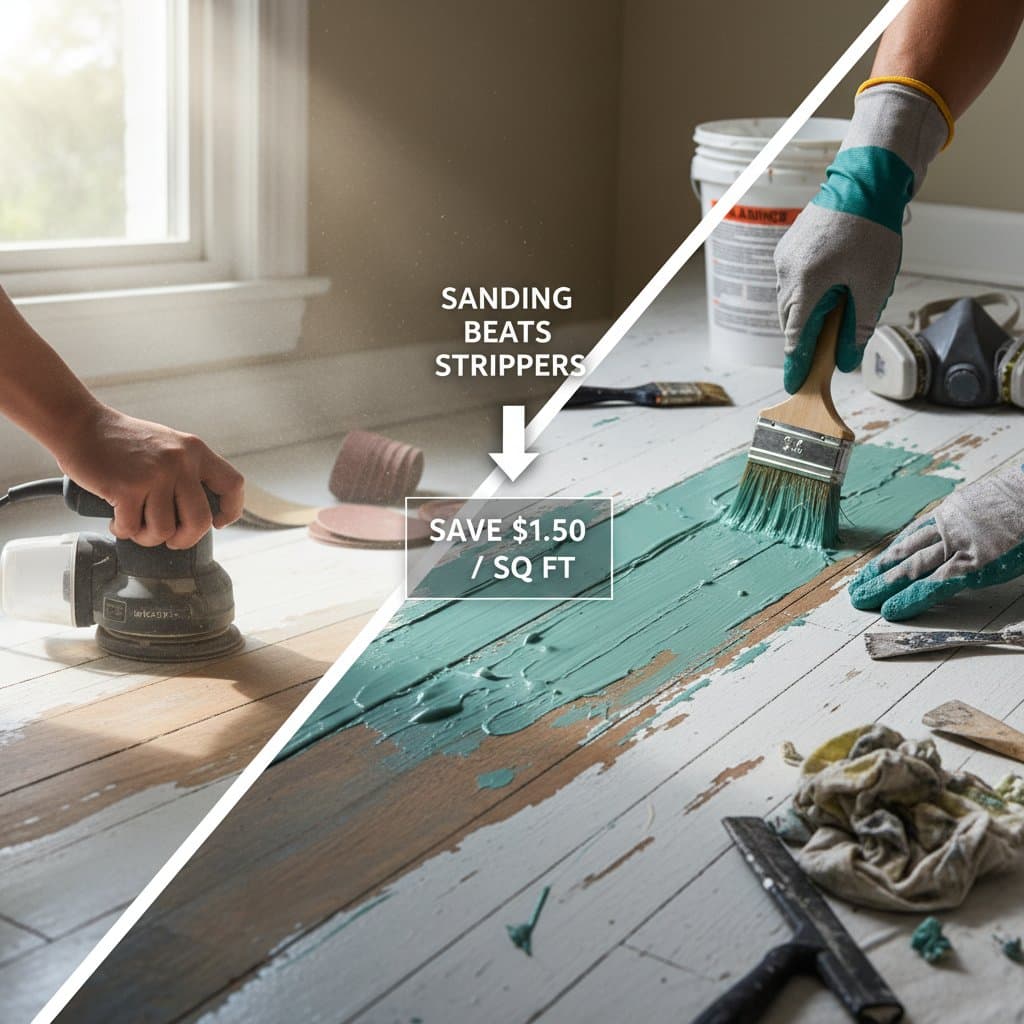Top Deglosser Alternatives to Banned TSP for 2025
Surface preparation remains essential for successful painting projects. Trisodium phosphate, commonly known as TSP, once served as the standard cleaner and deglosser for professionals and DIY individuals. This compound effectively removed grime, reduced gloss, and created an ideal base for paint adhesion. However, environmental concerns have led to restrictions on TSP in many areas, necessitating reliable substitutes. Fortunately, innovative products now offer comparable performance with reduced risks to health and the environment. The following sections examine these alternatives and provide guidance for their use.
Reasons for the TSP Ban
TSP excelled at surface preparation, yet its phosphate components posed environmental challenges. When discharged into waterways, phosphates contribute to algae overgrowth, disrupting aquatic ecosystems. Stricter disposal regulations and retailer decisions have removed TSP from many markets. This change requires painters, homeowners, and contractors to identify options that deliver equivalent cleaning and deglossing capabilities while prioritizing safety. Advances in formulation have produced viable solutions that align with these demands.
Criteria for Effective TSP Substitutes
An ideal deglosser or cleaner must accomplish three key functions. First, it removes grease and oils that hinder paint bonding. Second, it dulls glossy surfaces to promote proper adhesion. Third, it eliminates residue that could compromise primers or topcoats. Superior products incorporate biodegradable surfactants and non-toxic solvents for balanced efficacy and safety. These formulations rinse cleanly, suit various surfaces, and minimize the need for extensive post-application steps.
Leading Deglosser Alternatives for 2025
Professionals and experienced DIY users rely on the following products to replace TSP effectively.
1. Krud Kutter Prepaint Cleaner
This versatile solution performs cleaning, deglossing, and preparation in a single application. The phosphate-free, biodegradable formula suits wood, laminate, and metal surfaces. Apply by spraying, allow a one-minute dwell time, and remove with a damp cloth; rinsing proves unnecessary for most painting tasks. It excels on cabinets, trim, and kitchen walls with light grease buildup. A quart container provides economical coverage for professional-grade outcomes.
2. Klean-Strip Liquid Sander Deglosser
This option proves invaluable for time-sensitive renovations where sanding presents challenges. Use a lint-free cloth to apply the product, rub in a gentle motion, and permit drying before priming. The formula evaporates rapidly, creating a tacky surface ready for coatings. It suits renters and confined spaces by avoiding dust and debris. The result delivers efficient preparation without extensive cleanup.
3. Simple Green Heavy Duty Cleaner
This environmentally conscious cleaner adapts well to surface preparation needs. Dilute for routine tasks or apply undiluted to glossy doors and trim. The non-toxic, non-abrasive composition remains safe near pets and vegetation. Wiping yields a uniform matte finish. For projects of medium to large scale, it offers cost-effective performance with ethical benefits.
4. Homemade Vinegar and Baking Soda Solution
Budget-minded DIY participants favor this straightforward mixture. Combine one part vinegar with two parts water, then add one tablespoon of baking soda to initiate a reaction that lifts debris and reduces mild gloss. While it lacks the intensity for heavy lacquers, it performs admirably on walls, furniture, and craft items. Rinse thoroughly and allow complete drying prior to priming for optimal results.
5. EcoFast Professional Surface Prep
This recent market addition garners attention from industry experts. The water-based, biodegradable blend addresses both cleaning and deglossing requirements. It applies safely to painted wood, metal, and composites. The formulation prevents streaking and ensures even surface leveling. Positioned as a contemporary, sustainable counterpart to TSP, it justifies its premium cost through superior reliability.
Steps for Optimal Deglosser Application
Effective preparation forms the foundation of durable finishes. Follow these procedures to achieve a paint-ready surface.
- Remove loose dust with a microfiber cloth or vacuum brush attachment.
- Apply the selected cleaner according to label instructions, using a sponge or rag to control distribution and prevent drips.
- Scrub in circular motions, targeting areas like door frames, cabinets, and railings.
- Wipe or rinse as recommended; a brief damp cloth pass adds assurance even for no-rinse products.
- Test the surface by touch; a squeaky, matte feel indicates readiness for primer, while slickness requires reapplication.
For glossy trim or oil-based residues, pair light sanding with liquid deglosser. This method combines mechanical and chemical actions for enhanced adhesion.
Cost Considerations Across Budget Tiers
Suitable options exist for every financial level, each leading to a clean, receptive surface.
- Low Budget: Opt for a vinegar and baking soda solution or diluted Simple Green. These require minimal expenditure and work on standard surfaces, ideal for beginners or temporary residents.
- Mid Budget: Select Krud Kutter or Klean-Strip Liquid Sander Deglosser for dependable results with reduced effort. They fit small renovations or property flips.
- Pro Budget: Choose EcoFast or similar commercial cleaners for consistent outcomes on expansive or intricate areas. The investment supports ongoing professional applications.
Performance in Practical Settings
Thorough preparation determines the quality of painted surfaces in both studio and residential environments. Under intense lighting, residual gloss can create uneven reflections that undermine the finish. Reliable TSP alternatives prevent such issues, promoting uniform color distribution. This consistency enhances visual appeal in images and occupied spaces alike.
Environmental and Disposal Advantages
Transitioning from TSP yields benefits in waste management. Diluted phosphate-free products typically enter household drains without issue, degrading naturally to avoid ecological harm. Consult product labels for confirmation. Pairing with reusable cloths further reduces refuse, supporting water quality and sustainability.
Sustaining Your Finished Surfaces
Post-painting, diligent preparation manifests in resilient, uniform coatings that withstand daily wear. Strong adhesion minimizes chipping and extends the interval between maintenance. Assemble a dedicated prep kit for future endeavors, including labeled cleaners and stored tools, to replicate successful techniques across surfaces.



